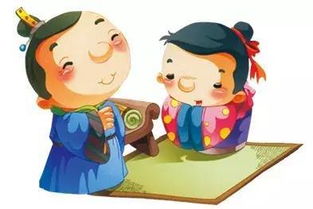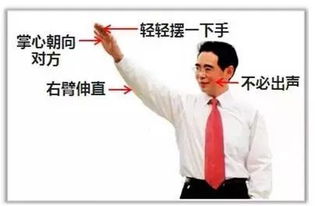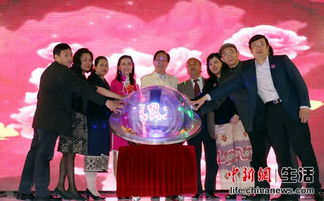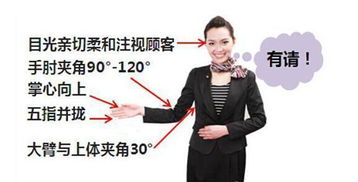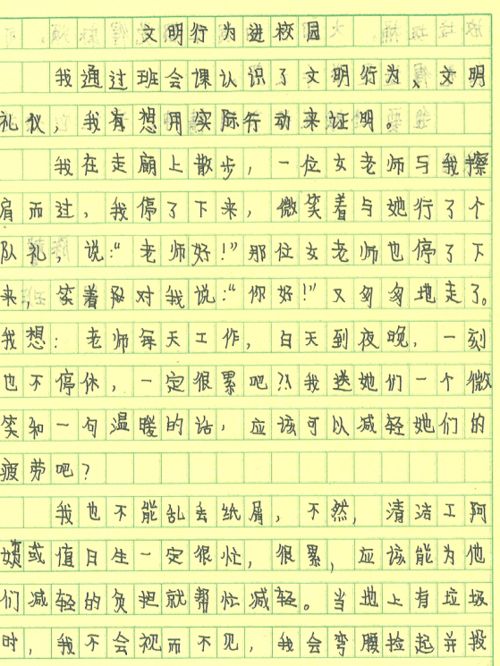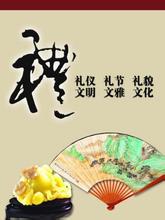1.关于餐桌礼仪的论文怎麽写
Table Manners American Table MannersServing and Being Served, a Few PointersThe Secret to the Formal Place SettingA Brief History of the Fork, Knife and SpoonHow to Use a Fork, Knife, and SpoonHow to Use a NapkinEtiquette Tips and PitfallsWhat You Can Eat with Your FingersEating Customs in ChinaChinese BanquetsChopsticks The Role of Manners? There is not much call for a complete working knowledge of table manners in America today. Many families only gather all at once around the dinner table at holiday feasts, and most restaurants are too casual to require, or even to allow for, more than basic good table manners. If, having dropped his napkin, a diner at a bistro were to attempt to practice proper etiquette by signaling a member of the staff to bring a fresh one, he would probably have to do without a napkin at all. Try as he might to make eye contact and indicate the nature of the problem with a subtle wiggle of the eyebrow and downward flicker of the glance, he is likely to succeed only in causing his date to think he is making a play for the server. Although strict good manners forbid placing a used eating utensil back on the table, the server removing a plate on which a fork has quite properly been positioned "pointing at 11 o'clock" might just plop that item back where it started, making more of a clatter than if the diner had simply done it herself. From time to time -- perhaps at an important business dinner, a romantic date at an expensive restaurant, or a first dinner with the family of the person who may be "the One" -- it is necessary to display a more sophisticated knowledge of table etiquette. This is not difficult, once you have mastered the basics. Anyone armed with this core knowledge and the ability to adapt smoothly to the situation at hand will be able to handle even the most formal event. The goal is not, after all, to demonstrate utter mastery of the most arcane details of etiquette (which would be quite difficult considering the wide variations of customs in different cultures and from generation to generation), but rather to behave with graciousness and poise at the table. Mastering the Basics Much of the difficulty encountered in learning table manners derives from the struggle to master the ritual handling of the various tools involved. In order to display the right social veneer, it is necessary to sit at the table with elegant ease and wield the utensils with aplomb. The diner who leaves the napkin folded on his plate until it obstructs the placement of his appetizer plate reveals his lack of training. The dinner party guest who observes with dismay the array of flatware on either side of her plate, need only take the time to learn the simple secret to the plan. There are, of course, a few tips and pitfalls to be aware of, as well as the occasional surprising item you can eat with your hands. Here is a quick guide which will help steer you through even the most formal of occasions. ---------------------------------------------------------------------- China Dining Custom Table Manners The main difference between Chinese and western eating habits is that unlike the West, where everyone has their own plate of food, in China the dishes are placed on the table and everybody shares. If you are being treated by a Chinese host, be prepared for a ton of food. Chinese are very proud of their culture of cuisine and will do their best to show their hospitality. And sometimes the Chinese host use their chopsticks to put food in your bowl or plate. This is a sign of politeness. The appropriate thing to do would be to eat the whatever-it-is and say how yummy it is. If you feel uncomfortable with this, you can just say a polite thank you and leave the food there. Eating No-no's Don't stick your chopsticks upright in the rice bowl.Instead,lay them on your dish. The reason for this is that when somebody dies,the shrine to them contains a bowl of sand or rice with two sticks of incense stuck upright in it. So if you stick your chopsticks in the rice bowl, it looks like this shrine and is equivalent to wishing death upon a person at the table! Make sure the spout of the teapot is not facing anyone. It is impolite to set the teapot down where the spout is facing towards somebody. The spout should always be directed to where nobody is sitting, usually just outward from the table. Don't tap on your bowl with your chopsticks.Beggars tap on their bowls, so this is not polite.Also, when the food is coming too slow in a restarant, people will tap their bowls. If you are in someone's home,it is like insulting the cook. Drinking Gan Bei! (Cheers! “Gan Bei” 。
2.论文:中西餐用餐礼仪比较 2500字以上
中餐用餐礼仪----关于筷子 中国人使用筷子用餐是从远古流传下来的,古时又称其为“箸”,日常生活当中对筷子的运用是非常有讲究的。
一般我们在使用筷子时,正确的使用方法讲究得是用右手执筷,大拇指和食指捏住筷子的上端,另外三个手指自然弯曲扶住筷子,并且筷子的两端一定要对齐。在使用过程当中,用餐前筷子一定要整齐码放在饭碗的右侧,用餐后则一定要整齐的竖向码放在饭碗的正中。
但这要绝对禁忌以下十二种筷子的使用方法。 1、三长两短:这意思就是说在用餐前或用餐过程当中,将筷子长短不齐的放在桌子上。
这种做法是大不吉利的,通常我们管它叫“三长两短”。其意思是代表“死亡”。
因为中国人过去认为人死以后是要装进棺材的,在人装进去以后,还没有盖棺材盖的时候,棺材的组成部分是前后两块短木板,两旁加底部共三块长木板,五块木板合在一起做成的棺材正好是三长两短,所以说这是极为不吉利的事情。 2、仙人指路:这种做法也是极为不能被人接受的,这种拿筷子的方法是,用大拇指和中指、无名指、小指捏住筷子,而食指伸出。
这在北京人眼里叫“骂大街”。因为在吃饭时食指伸出,总在不停的指别人,北京人一般伸出食指去指对方时,大都带有指责的意思。
所以说,吃饭用筷子时用手指人,无异于指责别人,这同骂人是一样的,是不能够允许的。还有一种情况也是这种意思,那就是吃饭时同别人交谈并用筷子指人。
3、品箸留声:这种做法也是不行的,其做法是把筷子的一端含在嘴里,用嘴来回去嘬,并不时的发出咝咝声响。这种行为被视为是一种下贱的做法。
因为在吃饭时用嘴嘬筷子的本身就是一种无礼的行为,再加上配以声音,更是令人生厌。所以一般出现这种做法都会被认为是缺少家教,同样不能够允许。
4、击盏敲盅:这种行为被看作是乞丐要饭,其做法是在用餐时用筷子敲击盘碗。因为过去只有要饭的才用筷子击打要饭盆,其发出的声响配上嘴里的哀告,使行人注意并给与施舍。
这种做法被视为极其下贱的事情,被他人所不齿。 5、执箸巡城:这种做法是手里拿着筷子,做旁若无人状,用筷子来回在桌子上的菜盘里巡找,知从哪里下筷为好。
此种行为是典型的缺乏修养的表现,且目中无人极其令人反感。 6、迷箸刨坟:这是指手里拿着筷子在菜盘里不住的扒拉,以求寻找猎物,就像盗墓刨坟的一般。
这种做法同“迷箸巡城”相近,都属于缺乏教养的做法,令人生厌。 7、泪箸遗珠:实际上这是用筷子往自己盘子里夹菜时,手里不利落,将菜汤流落到其它菜里或桌子上。
这种做法被视为严重失礼,同样是不可取的。 8、颠倒乾坤:这就是说用餐时将筷子颠倒使用,这种做法是非常被人看不起的,正所谓饥不择食,以至于都不顾脸面了,将筷子使倒,这是绝对不可以的。
9、定海神针:在用餐时用一只筷子去插盘子里的菜品,这也是不行的,这是被认为对同桌用餐人员的一种羞辱。在吃饭时作出这种举动,无异于在欧洲当众对人伸出中指的意思是一样的,这也是不行的。
10、当众上香:往往是出于好心帮别人盛饭时,为了方便省事把一副筷子插在饭中递给对方。被会人视为大不敬,因为北京的传统是为死人上香时才这样做,如果把一副筷子插入饭中,无异是被视同于给死人上香一样,所以说,把筷子插在碗里是决不被接受的。
3.关于餐桌礼仪的论文怎麽写
Table Manners American Table MannersServing and Being Served, a Few PointersThe Secret to the Formal Place SettingA Brief History of the Fork, Knife and SpoonHow to Use a Fork, Knife, and SpoonHow to Use a NapkinEtiquette Tips and PitfallsWhat You Can Eat with Your FingersEating Customs in ChinaChinese BanquetsChopsticks The Role of Manners? There is not much call for a complete working knowledge of table manners in America today. Many families only gather all at once around the dinner table at holiday feasts, and most restaurants are too casual to require, or even to allow for, more than basic good table manners. If, having dropped his napkin, a diner at a bistro were to attempt to practice proper etiquette by signaling a member of the staff to bring a fresh one, he would probably have to do without a napkin at all. Try as he might to make eye contact and indicate the nature of the problem with a subtle wiggle of the eyebrow and downward flicker of the glance, he is likely to succeed only in causing his date to think he is making a play for the server. Although strict good manners forbid placing a used eating utensil back on the table, the server removing a plate on which a fork has quite properly been positioned "pointing at 11 o'clock" might just plop that item back where it started, making more of a clatter than if the diner had simply done it herself. From time to time -- perhaps at an important business dinner, a romantic date at an expensive restaurant, or a first dinner with the family of the person who may be "the One" -- it is necessary to display a more sophisticated knowledge of table etiquette. This is not difficult, once you have mastered the basics. Anyone armed with this core knowledge and the ability to adapt smoothly to the situation at hand will be able to handle even the most formal event. The goal is not, after all, to demonstrate utter mastery of the most arcane details of etiquette (which would be quite difficult considering the wide variations of customs in different cultures and from generation to generation), but rather to behave with graciousness and poise at the table. Mastering the Basics Much of the difficulty encountered in learning table manners derives from the struggle to master the ritual handling of the various tools involved. In order to display the right social veneer, it is necessary to sit at the table with elegant ease and wield the utensils with aplomb. The diner who leaves the napkin folded on his plate until it obstructs the placement of his appetizer plate reveals his lack of training. The dinner party guest who observes with dismay the array of flatware on either side of her plate, need only take the time to learn the simple secret to the plan. There are, of course, a few tips and pitfalls to be aware of, as well as the occasional surprising item you can eat with your hands. Here is a quick guide which will help steer you through even the most formal of occasions. ---------------------------------------------------------------------- China Dining Custom Table Manners The main difference between Chinese and western eating habits is that unlike the West, where everyone has their own plate of food, in China the dishes are placed on the table and everybody shares. If you are being treated by a Chinese host, be prepared for a ton of food. Chinese are very proud of their culture of cuisine and will do their best to show their hospitality. And sometimes the Chinese host use their chopsticks to put food in your bowl or plate. This is a sign of politeness. The appropriate thing to do would be to eat the whatever-it-is and say how yummy it is. If you feel uncomfortable with this, you can just say a polite thank you and leave the food there. Eating No-no's Don't stick your chopsticks upright in the rice bowl.Instead,lay them on your dish. The reason for this is that when somebody dies,the shrine to them contains a bowl of sand or rice with two sticks of incense stuck upright in it. So if you stick your chopsticks in the rice bowl, it looks like this shrine and is equivalent to wishing death upon a person at the table! Make sure the spout of the teapot is not facing anyone. It is impolite to set the teapot down where the spout is facing towards somebody. The spout should always be directed to where nobody is sitting, usually just outward from the table. Don't tap on your bowl with your chopsticks.Beggars tap on their bowls, so this is not polite.Also, when the food is coming too slow in a restarant, people will tap their bowls. If you are in someone's home,it is like insulting the cook. Drinking Gan Bei! (Cheers! “Gan Bei” literally m。
4.关于吃饭的礼仪 作文
优雅的吃饭:吃慢一点,但太做作也不好。
吃饭的礼仪: 餐桌坐次的暗示:在中国的饮食礼仪中.坐在那里非常重要.主座一定是买单的人.主座是指距离门口最远的正中央位置.主座的对面坐的是邀请人的助理.主宾和副主宾分别坐在邀请人的右侧和左侧,位居第三位,第四位的客人分别坐在助理的右侧和左侧.让邀请人和客人面对而坐.或让客人坐在主桌上都算失礼,中国的文化是不让客人感到紧张. 邀请人可以指定客人的座位.自己的部下或晚辈也可被按排在比自己更重要的位置上.通过分配座位.中国人暗示谁对自己最重要. 中国餐桌上的礼仪归结为以下几点:一.入座的礼仪.先请客人入座上席.在请长者入座客人旁依次入座,入座时要从椅子左边进入.入座后不要动筷子.更不要弄出什么响声来.也不要起身走动.如果有什么事要向主人打招呼. 第二,进餐时.先请客人.长着动筷子.夹菜时每次少一些.离自己远的菜就少吃一些.吃饭时不要出声音.喝汤时也不要出声响,喝汤用汤匙一小口一小口地喝.不宜把碗端到嘴边喝,汤太热时凉了以后再喝.不要一边吹一边喝.有的人吃饭喜欢用咀嚼食物.特别是使劲咀嚼脆食物,发出很清晰的声音来.这种做法是不合礼仪要求的.特别是和众人一起进餐时,就要尽量防止出现这种现象. 第三:进餐时不要打嗝,也不要出现其他声音,如果出现打喷嚏,肠鸣等不由自主的声响时,就要说一声"真不好意思".;对不起;."请原凉".之内的话.以示歉意. 第四;如果要给客人或长辈布菜.最好用公筷.也可以把离客人或长辈远的菜肴送到他们跟前,按我们中华民族的习惯.菜是一个一个往上端的.如果同桌有领导,老人,客人的话.每当上来一个新菜时就请他们先动筷子.或着轮流请他们先动筷子.以表示对他们的重视. 第五:吃到鱼头,鱼刺,骨头等物时,不要往外面吐,也不要往地上仍.要慢慢用手拿到自己的碟子里,或放在紧靠自己餐桌边或放在事先准备好的纸上. 第六:要适时地抽空和左右的人聊几句风趣的话,以调和气氛.不要光着头吃饭,不管别人,也不要狼吞虎咽地大吃一顿,更不要贪杯. 第七:最好不要在餐桌上剔牙.如果要剔牙时,就要用餐巾或手挡住自己的嘴巴. 第八:要明确此次进餐的主要任务.要明确以谈生意为主.还是以联络感情为主.或是以吃饭为主.如果是前着,在安排座位时就要注意.把主要谈判人的座位相互靠近便于交谈或疏通情感.如果是后着.只需要注意一下常识性的礼节就行了,把重点放在欣赏菜肴上, 第九:最后离席时.必须向主人表示感谢.或者就此时邀请主人以后到自己家做客,以示回谢。
5.关于吃饭的礼仪
开始用餐,要讲究文明礼貌,要注意自己的“吃相”。
养成良好的用餐习惯。一般应注意以下几点: 让长辈先动碗筷用餐,或听到长辈说:“大家一块吃吧”,你再动筷,不能抢在长辈的前面。
吃饭时,要端起碗,大拇指扣住碗口,食指、中指、无名指扣碗底,手心空着。不端碗伏在桌子上对着碗吃饭,不但吃相不雅,而且压迫胃部,影响消化。
夹菜时,应从盘子靠近或面对自己的盘边夹起,不要从盘子中间或靠别人的一边夹起,更不能用筷子在菜盘子里翻来倒去地“寻寻觅觅”,眼睛也不要老盯着菜盘子,一次夹菜也不宜太多。遇到自己爱吃的菜,不可如风卷残云一般地猛吃一气,更不能干脆把盘子端到自己跟前,大吃特吃,要顾及同桌的父母和姐弟。
如果盘中的菜已不多,你又想把它“打扫”干净,应征询一下同桌人的意见,别人都表示不吃了,你才可以把它吃光。 要闭嘴咀嚼,细嚼慢咽,这不仅有利于消化,也是餐桌上的礼仪要求。
决不能张开大嘴,大块往嘴里塞,狼吞虎咽的,更不能在夹起饭菜时,伸长脖子,张开大嘴,伸着舌头用嘴去接菜;一次不要放入太多的食物进口,不然会给人留下一副馋相和贪婪的印象。 用餐的动作要文雅一些。
夹菜时,不要碰到邻座,不要把盘里的菜拨到桌子上,不要把汤泼翻,不要将菜汤滴到桌子上。嘴角沾有饭粒,要用餐纸或餐巾轻轻抹去,不要用舌头去舔。
咀嚼饭菜,嘴里不要发出“叭叭”、“呱叽呱叽”的声音。口含食物,最好不要与别人交谈,开玩笑要有节制,以免口中食物喷出来,或者呛入气管,造成危险;确需要与家人谈话时,应轻声细语。
吐出的骨头、鱼刺、菜渣,要用筷子或手取接出来,放在自己面前的桌子上,不能直接吐到桌面上或地面上。如果要咳嗽,打喷嚏,要用手或手帕捂住嘴,并把头向后方转。
吃饭嚼到沙粒或嗓子里有痰时,要离开餐桌去吐掉。 在吃饭过程中,要尽量自己添饭,并能主动给长辈添饭、夹菜。
遇到长辈给自己添饭、夹菜时,要道谢。 随着中西饮食文化的不断交流,中餐不仅是中国人的传统饮食习惯,还越来越受到外国人的青睐。
而这种看似最平常不过的中式餐饮,用餐时的礼仪却是有一番讲究的。 中餐的餐具主要有杯、盘、碗、碟、筷、匙六种。
在正式的宴会上,水杯放在菜盘上方,酒杯放在右上方。筷子与汤匙可放在专用的座子上,或放在纸套中。
公用的筷子和汤匙最好放在专用的座子上。 中餐上菜的顺序一般是:先上冷盘,后上热菜,最后上甜食和水果。
用餐前,服务员为每人送上的第一道湿毛巾是擦手用的,最好不要用它去擦脸。在上虾、蟹、鸡等菜肴前,服务员会送上一只小水盂,其中飘着柠檬片或花瓣,作洗…… 中华饮食,源远流长。
在这自古为礼仪之邦,讲究民以食为天的国度里,饮食礼仪自然成为饮食文化的一个重要部分。 中国的饮宴礼仪号称始于周公,千百年的演进,当然不会再有“孟光接了梁鸿案”那样的日子,但也还是终于形成今天大家普遍接受的一套饮食进餐礼仪,是古代饮食礼制的继承和发展。
饮食礼仪因宴席的性质,目的而不同;不同的地区,也是千差万别。这里仅举几例,权作参考: 古代的食礼是按阶层划分:宫廷,官府,行帮,民间等。
现代食礼则简化为:主人(东道),客人了。作为客人,赴宴讲究仪容,根据关系亲疏决定是否携带小礼品或好酒。
赴宴守时守约;抵达后,先根据认识与否,自报家门,或由东道进行引见介绍,听从东道安排。 然后入座:这个“英雄排座次”,是整个中国食礼中最重要的一项。
从古到今,因为桌具的演进,所以座位的排法也相应变化。总的来讲,座次“尚左尊东” “面朝大门为尊” 家宴首席为辈分最高的长者,末席为最低者;家庭宴请,首席为地位最尊的客人,客主人则居末席。
首席未落座,都不能落座,首席未动手,都不能动手,巡酒时自首席按顺序一路敬下,再饮。 更讲究的,如果来报有人来,无论尊卑地位,全席之人应出迎。
若是圆桌,则正对大门的为主客,左手边依次为2,4,6右手边依次为3,5,7直至汇合。 若为八仙桌,如果有正对大门的座位,则正对大门一侧的右位为主客, 如果不正对大门,则面东的一侧右席为首席。
然后首席的左手边坐开去为2,4,6,8(8在对面),右手边为3,5,7(7在正对面)。 如果为大宴,桌与桌间的排列讲究首席居前居中,左边依次2,4,6席,右边为3,5,7席。
根据主客身份,地位,亲疏分坐。 上菜: 上菜顺序,中餐一般讲究:先凉后热,先炒后烧,咸鲜清淡的先上,甜的味浓味厚的后上,最后是饭菜。
有规格的宴席,热菜中的主菜——比如燕窝席里的燕窝,海参宴里的海参,鱼翅宴里的鱼翅,应该先上,即所谓最贵的热菜先上。再辅以溜炒烧扒。
宴席里的大致顺序是: (茶)-在酒家里,因为要等待,所以先来清口茶。但不是必须的。
因为古人喝茶多是单独的。 凉菜-冷拼,花拼。
热炒-视规模选用滑炒,软炒,干炸,爆,烩,烧,蒸,浇,扒等组合。 大菜-(不是必须的)指整只,整块,整条的高贵菜肴,比如一头乳猪,一只全羊,一大块鹿肉什么的。
甜菜-包括甜汤,如冰糖莲子,银耳甜汤等 点心-一般大宴不供饭,而以糕,饼,。
6.3000字的饮食文化论文
饮食文化论文 人生在世,吃穿二事,很早我们就知道了这句话。
人虽然作为高级动物,但仍需要与普通动物一样:“吃”。所以,零零总总令人眼花缭乱的各类美食也孕育而生,从古至今,长盛不衰。
饮食行业也成为三百六十行常展长新的行当,而饮食业也形成了自己的独特的文化,说的更直接些就是一种“吃”的文化。 中国有着5000年的悠久历史,中国有着灿烂丰富、博大精深的饮食文化;中国人注重“天人合一”,中餐以食表意、以物传情的特点。
所以也就使得中国传统的饮食美食都“食出有门”如中华饮食文化理论奠基人??孔子的《论语》中就有关于饮食“二不厌、三适度、十不食”的论述。直至两千年后的今日,仍具有极高的理论指导性。
中华茶道始主??陆羽认为茶道在中华饮食文化中的地位几乎与酒等量齐观,他曾遍访名茶产区荐评品第,又精研泉水,次第品级。中华食文化之圣??袁枚其《随园食单》经历五十年才写成,成为中华饮食史上光前裕后之作,也有中华饮食文化“食经”的美誉。
还有以味道治国的大臣??伊尹将饮食的“色、香、味、形”与治国相融合,所以就有了 “治国若烹小鲜”之说。 由此,这就形成了我们传统的饮食有“四重”的特点: 1、重食:古人就有:“民以食为天”之说,见面常问“吃过没有?”足见饮食文化的地位。
2、重养:以“五谷”养“六脏”,饮食中重视人体养生保健。 3、重味:中华饮食最注意食物的味,讲究“色、香、味、型”。
各种味道差异构成各种菜系的基础。 4、重理:注意各种食物的搭配,以相生相克、相辅相成等阴阳调和之理性认识指导烹饪。
正是由于中华饮食讲究料、作、食等等的精细,内容丰富且博大精深,民族特色鲜明,既兼容又特别,从古到今,历代相传又推陈出新。 不同的饮食习惯造就了不同的饮食文化。
中国人大而全的一贯作风,吃饭时自然是七大盘、八大碗,一是显示了富足,二是摆足了排场;近而各地比吃、全国争雄,最终形成了八大菜系,也就是吃方面八个不同的“高手”;说得虽有些低俗,但还是很能传情达意的。 因此,中华饮食文化就其深层内涵,可以简单概括成八个字:精致、悦目、坠情、礼数。
这八个字,反映了饮食活动过程中饮食品质、审美体验、情感活动、社会功能等所包含的独特文化意蕴,也反映了饮食文化与中华优秀传统文化的密切联系。 精致;我们在得意时都喜欢在酒馆、餐厅里点几个精致小菜,或自己做几个精致小菜来犒赏自己与亲戚友人,而这时就需要吃出一种气氛、品位甚至是文化来。
饮食既然作为一种文化,一种“吃”的文化,精品意识作为一种文化精神,却越来越广泛、越来越深入地渗透、贯彻到整个饮食活动过程中。选料、烹调、配伍乃至饮食环境,都体现着 “精致”。
尤其是现在非常注重个人身体保健的现代社会,更是要求我们的饮食向精致化发展,使饮食中融入文化,透出文化,从而“吃”出文化来,避免和摒弃那种“过之屠门而大嚼”不雅行为和有损健康的不良习惯。 悦目;这是将“吃”的文化与内涵进行升华的高级阶段,体现了饮食文化的审美特征。
中华饮食之所以能够征服世界,重要原因之一,就在于它美,它令食者有“三月不知肉味”的同时,更令人拍案叫绝和赏心悦目。这种悦目,是指中国饮食活动形式与内容的完美统一,是指它给人们所带来的审美愉悦和精神享受,首先是味道美。
孙中山先生讲“辨味不精,则烹调之术不妙”,将对“味”的审美视作烹调的第一要义。 令人悦目的美味佳肴作为饮食文化的一个基本内涵,它是中华饮食的魅力之所在,悦目贯穿在饮食活动过程的每一个环节中。
坠情;这是对中华饮食文化社会心理功能的概括。因为菜系和饮食中蕴藏着各种感情在其中。
做的人付出心血和真情用心去做,而吃者更是品味到自己喜欢的饮食则抱着的是一种感激与赞赏。吃吃喝喝,不能简单视之,它实际上是人与人之间情感交流的媒介,是一种别开生面的社交活动。
一边吃饭,一边聊天,可以做生意、交流信息、采访。朋友离合,送往迎来,人们都习惯于在饭桌上表达惜别或欢迎的心情,感情上的风波,人们也往往借酒菜平息。
这是饮食活动对于社会心理的调节功能。过去的茶馆,大家坐下来喝茶、听书、摆龙门阵或者发泄对朝廷的不满,实在是一种极好的心理按摩。
中华饮食之所以具有“抒情”功能,是因为“饮德食和、万邦同乐”的哲学思想和由此而出现的具有民族特点的饮食方式。对于饮食活动中的情感文化,有个引导和提升品位的问题。
我们要提倡健康优美、奋发向上的文化情调,追求一种高尚的情操。 礼数;是指饮食活动的礼仪性。
中国是礼仪之邦,而这种礼仪与礼数也渗透到了饮食当中。而饮食讲究“礼数”,这与我们的传统文化有很大关系。
生老病死、送往迎来、祭神敬祖都是礼。《礼记?礼运》中说:“夫礼之初,始诸饮食。
“礼数”中也讲究着一种秩序和规范,比如在重要场合坐席的方向、箸匙的排列、上菜的次序、有些菜的象征、来历等等都体现着“礼数”。 我们谈“礼数”,更应把它理解成一种精神,一种内在的伦理精神,这种精神,贯穿在饮食活动过程中。
7.进餐礼仪
现代一般的聚会或应酬,大都以吃饭为主。除有关饮食方面的礼仪注意外,对于整个交际过程中的细节亦应注意,尤以女子更须注意,如果你举止不雅观,不懂礼节,是会贻笑大方的。
1.进餐时应闭嘴静咀嚼,勿张大嘴巴谈话,口中也不可塞满食物。
2.用手进食、吸吮手指或以餐巾揩拭都是不雅的仪态。
3.假使你想打喷嚏或擦鼻涕的话,不必道歉,应该立刻用餐巾按住口、鼻部,同时面向侧面,免得更引起人家注意。
4.口内的鱼骨或其他骨刺可以拇指与食指自合拢的唇间取出,果核则由口内吐出,吐在手掌上,然后放在盘子里。
5.喝汤时,先试温度,不可发出"嘶嘶"的声音,万一汤太烫(或嘴里的食物太热)时,不要吐出,应当从容不迫的喝口冰水加以调和。
6.喝饮料时要啜饮,勿作牛饮,啜饮前应先把口中食物嚼完咽下,并用餐巾擦拭嘴角,以免啜饮时在杯上留下残滓,反之,同席者口中正咀嚼食物时,应避免向其敬酒。
7.有东西在食物上时,可用刀叉或筷子将其挑出放在盘边,如有昆虫在食物上,则不必动它,也无需大惊小怪,敏慧的主人或侍者即可察觉而另予改换,如在餐馆时,则可告诉侍者。
8.作客时,不要品评自己不喜欢的食物。如端上之食物因故不能吃时,必须礼貌的谢谢主人,不予置评,尤其是女主人亲自烹调时,最好能予以赞赏一番。
9.口中有食物时勿行谈话,同席人口中正咀嚼食物时避免向其发问。
10.尽可避免在众人面前剔牙,若实在想清理一下牙缝不妨起身到洗手间漱口,纵使想当着大家面前剔牙,也可以用手掩口为宜。
11.尽可能的与邻座的客人谈话为宜,别拉着嗓门和对面的人谈笑,如果此时另有两位面对的客人也在说话,这不正象"打对台"吗?
12.若想补妆,千万不要在餐桌上擦抹脂粉,应到化妆室去。也不可在餐桌前搔首弄姿或梳理头发。
13.尽量避免在餐巾和杯子上沾染口红。
14.进餐时应挺直而坐,不可显得太勉强或不自然,进食时,须把食物送进口中,而不是嘴巴低移就食。
15.个人用过的餐具,不要放在大家吃的食物上。
16.到餐厅吃饭,点菜时不要犹豫不决,而老是点了这样又换那样。此外尚未听到主人的建议之前,不要先点价格昂贵的菜。
17.当你不再吃东西时,应该将双手自然下垂,不可鲁莽的将双肘摆在桌上。你虽已吃饱,但在同席客人未离席以前,亦不可先自起身离席。
18.告辞。宴会完毕,便可以辞了,这时主人若已经站在门口准备送客了,你可以顺着众客人走到主人面前,跟主人握一下手,说声谢谢便成了。千万不要拉着主人的手谈话,即使你有很多的话要跟主人说,也该留待他日有空再谈,免得阻碍人家送客。


 0
0 2024-04-16 09:00
2024-04-16 09:00